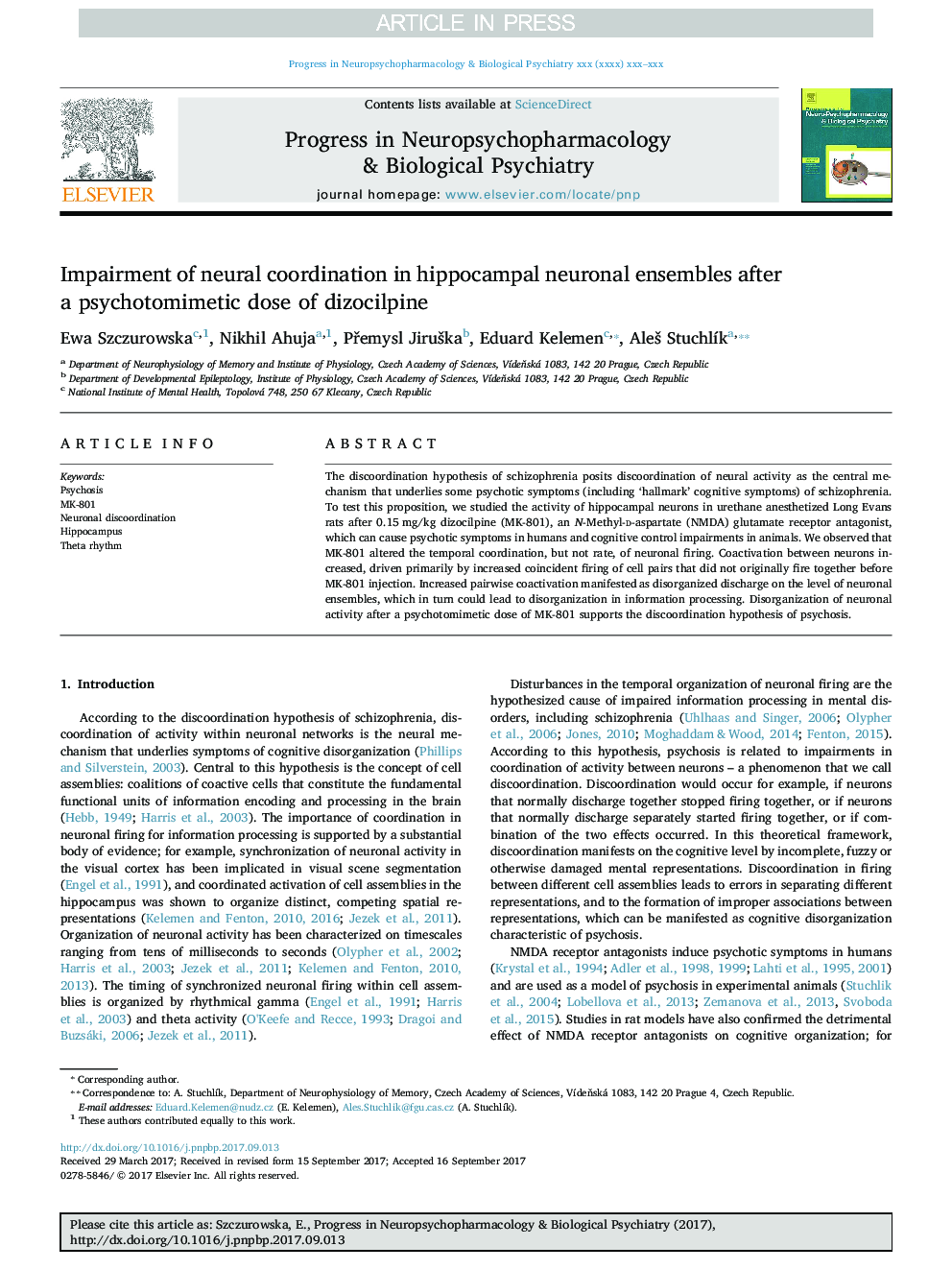| Article ID | Journal | Published Year | Pages | File Type |
|---|---|---|---|---|
| 8537535 | Progress in Neuro-Psychopharmacology and Biological Psychiatry | 2018 | 9 Pages |
Abstract
The discoordination hypothesis of schizophrenia posits discoordination of neural activity as the central mechanism that underlies some psychotic symptoms (including 'hallmark' cognitive symptoms) of schizophrenia. To test this proposition, we studied the activity of hippocampal neurons in urethane anesthetized Long Evans rats after 0.15Â mg/kg dizocilpine (MK-801), an N-Methyl-d-aspartate (NMDA) glutamate receptor antagonist, which can cause psychotic symptoms in humans and cognitive control impairments in animals. We observed that MK-801 altered the temporal coordination, but not rate, of neuronal firing. Coactivation between neurons increased, driven primarily by increased coincident firing of cell pairs that did not originally fire together before MK-801 injection. Increased pairwise coactivation manifested as disorganized discharge on the level of neuronal ensembles, which in turn could lead to disorganization in information processing. Disorganization of neuronal activity after a psychotomimetic dose of MK-801 supports the discoordination hypothesis of psychosis.
Related Topics
Life Sciences
Neuroscience
Biological Psychiatry
Authors
Ewa Szczurowska, Nikhil Ahuja, PÅemysl JiruÅ¡ka, Eduard Kelemen, AleÅ¡ StuchlÃk,
